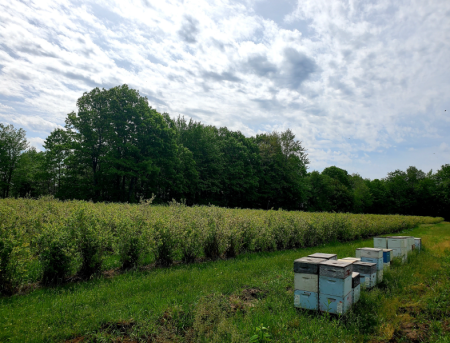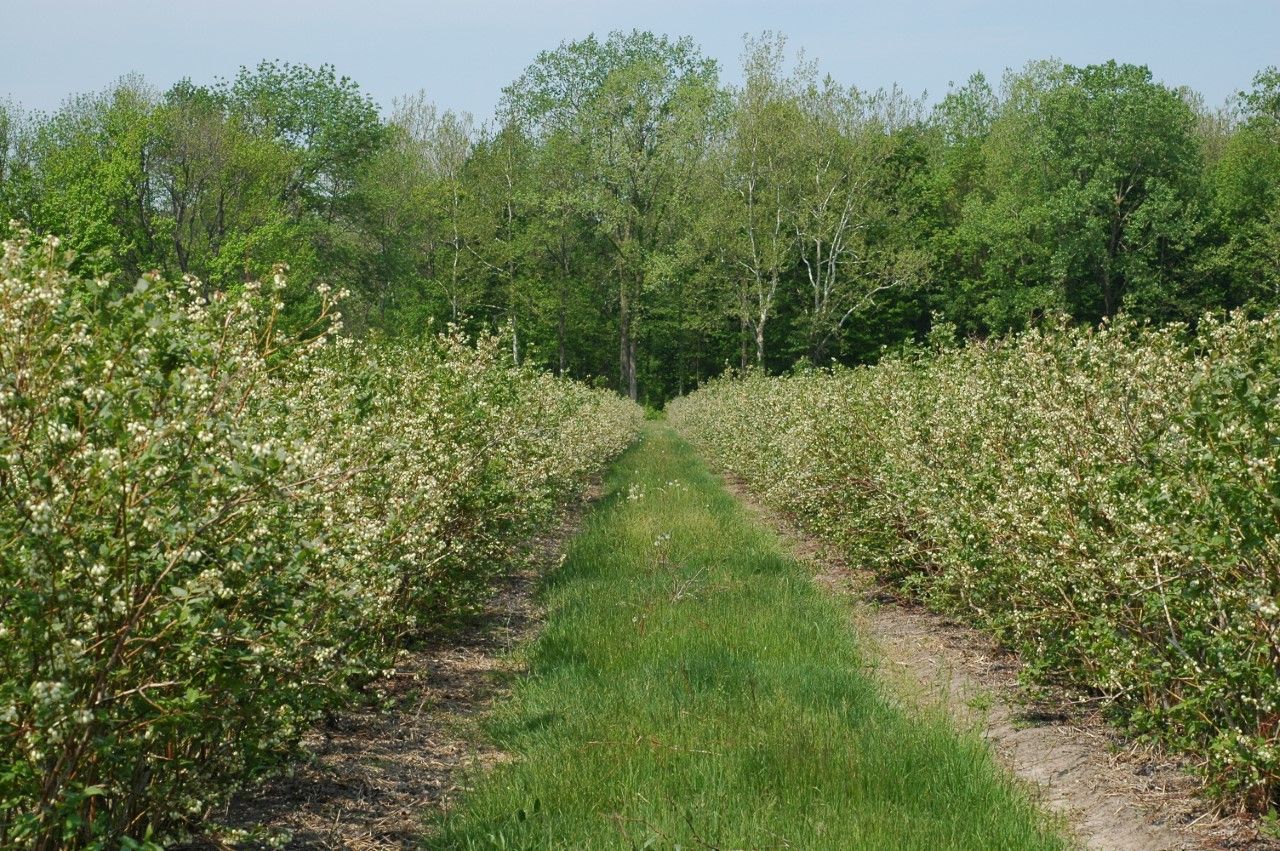Current Research: Bees and Pollinators

Optimizing blueberry pollination to ensure future yields in modern farming systems
Our multidisciplinary team includes horticulturalists, entomologists, apiculturalists, plant breeders, economics, and social scientists, and we are advised by a stakeholder advisory board that connects us to agriculture, government agencies, academia, and industry. The project has five main objectives:
- Conduct cost-benefit analyses of different honey bee stocking density and placement strategies to develop recommendations for modern blueberry systems.
- Determine pollination requirements and pollinator attraction across new and existing cultivars.
- Determine how variable weather conditions affect blueberry pollination.
- Develop predictive models of pollination, fruit set, and yield for creation of a Pollination Planner to improve pollination management decisions.
- Deliver information on improved blueberry pollination to the industry.

Managing pests during bloom while supporting healthy pollinators
Managing crop pests during the bloom of bee-pollinated crops, such as blueberry, can be particularly challenging. Growers must strike a balance between effective suppression of pests, and limiting risks to pollinators. This project will better understand the risks pesticides pose to managed bees during blueberry bloom, and test strategies for mitigating these risks.
Pesticide exposure – The project will identify and quantify pesticides found in bee collected pollen from managed bumble bees (Bombus impatiens) and honey bees (Apis mellifera) brought into blueberry fields for pollination. We will also identify the source of the pollen (what plants the bees are visiting). This will help us determine if managed bees are being exposed to pesticides through pollen and if so, where exposure is coming from.
Disease risks – Beekeepers often find that their hives have elevated rates of European foulbrood (EFB) disease after blueberry pollination. Therefore, we are testing strategies for reducing EFB rates in honey bees by exploring some of the potential stressors that could be leading to high rates of infection, such as poor nutrition, and pesticide exposure. We are also testing beekeeper strategies for mitigating these stressors.
Best management practices – Finally, we are testing grower best management practices, such as night spraying and use of drift reduction technology, to reduce risk to bees while suppressing pest populations.

Influence of extreme heat conditions on blueberry pollination and bee nutrition
Michigan is a leading producer of highbush blueberries, with a record ~110 million pounds harvested from the 22,000 bearing blueberry acres in 2016. However, despite high flower density and strong bush health in the spring of 2018, growers harvested only 66 million pounds, causing significant economic loss and financial hardship to the blueberry industry. This 50% crop loss came after a short period of extreme heat experienced at the end of May 2018, when many areas of the states’ blueberry fields were in bloom. While these things happened in the same year, we do not know enough about the effects of extreme heat on pollination form the plant or insect side of the interaction to be able to make recommendations on how to mitigate heat effects on pollination. Extreme spring weather in this region is expected to intensify with climate change, but the lack of previous experience under these conditions helps to explain the limited information on the degree to which these abiotic stressors affect blueberry pollination. For example, there are no published reports on threshold temperatures that inhibit key steps in the blueberry pollination process. Building on our recent preliminary research, this project will investigate the effects of extreme heat on blueberry pollination, provide insight on future cooling strategies to help ensure yields of this valuable crop, and determine whether extreme heat affects the nutritional value of pollen for bees. Our results will form the foundation of future interdisciplinary proposals to USDA-NIFA Foundational and USDA-SCRI.

Improving management strategies for establishing wildflower habitats
Land managers face challenges that may limit their ability to support bees using wildflower plantings. This research seeks to determine the best strategies to establish these plantings to optimize pollinator abundance. This ongoing experiment at the Clarksville Research Center is designed to determine the best combination of 1) land preparation methods, 2) seeding rates, and 3) post-seeding management methods to improve pollinator habitat establishment.
